By Dan Weisz
This has been a very good winter for American Robins in Tucson. Large groups have been seen in various parts of the Tucson Valley. One particular group has been seen regularly at Reid Park, where they are feasting on the fruit of palm trees lining a boundary street to the park.
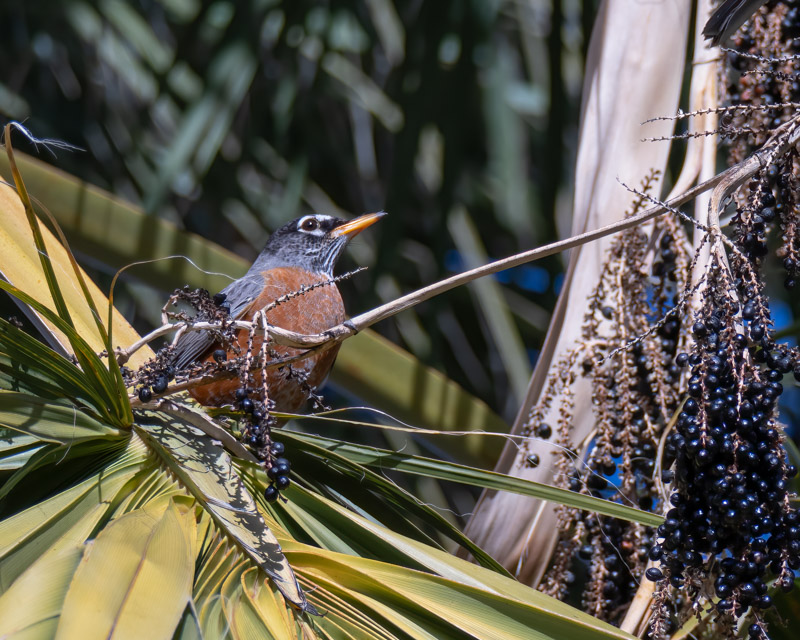
The Robin was named in America by settlers who thought they resembled the Robins they remembered seeing in Europe. Actually, the “American” Robins are not even in the same family as the European Robins. Additionally, the Robins in our area are larger and more pale than Robins in other parts of the species’ range in America. Robins are more common during the summer at higher elevations in southern Arizona. During the winter, they come down to lower elevations and that’s why we are more likely to see them in the city at this time of year.
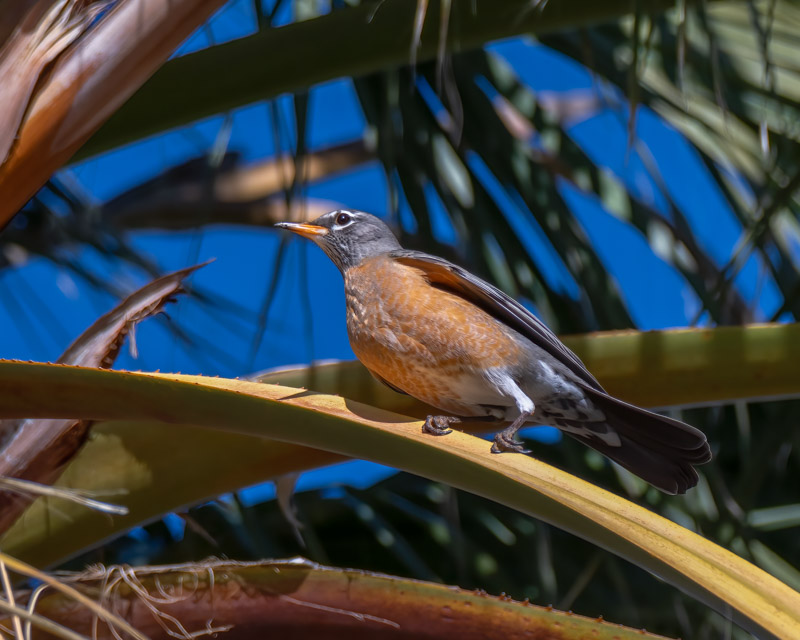
As I watched the Robins, I could see them flying into the palm trees from residential yards across the street. They would disappear into the back side of the palm trees, remaining beyond my view for a few minutes, and then all fly back towards the residential areas bordering the park. One bird finally perched on my side of the palm tree (above) and then surprisingly, turned around!
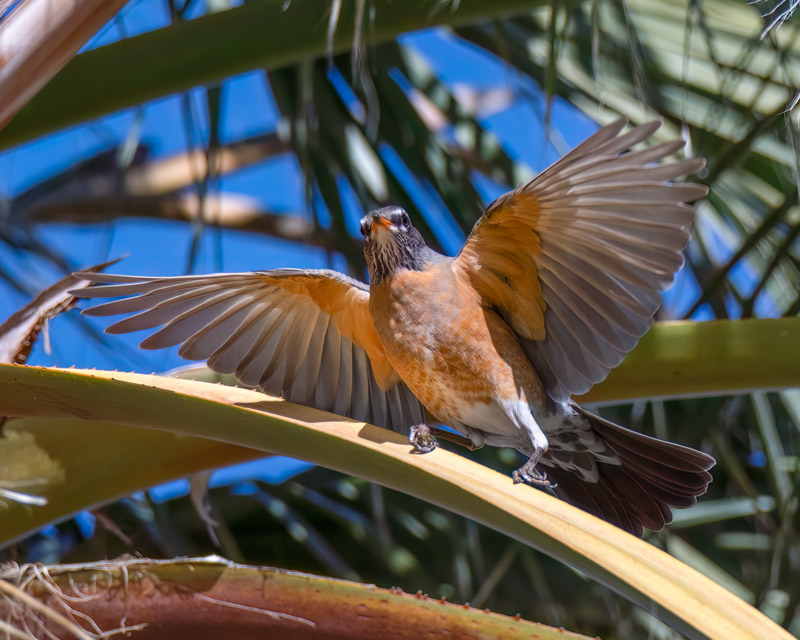
It flew a few inches to the side onto a large cluster of palm tree fruit.
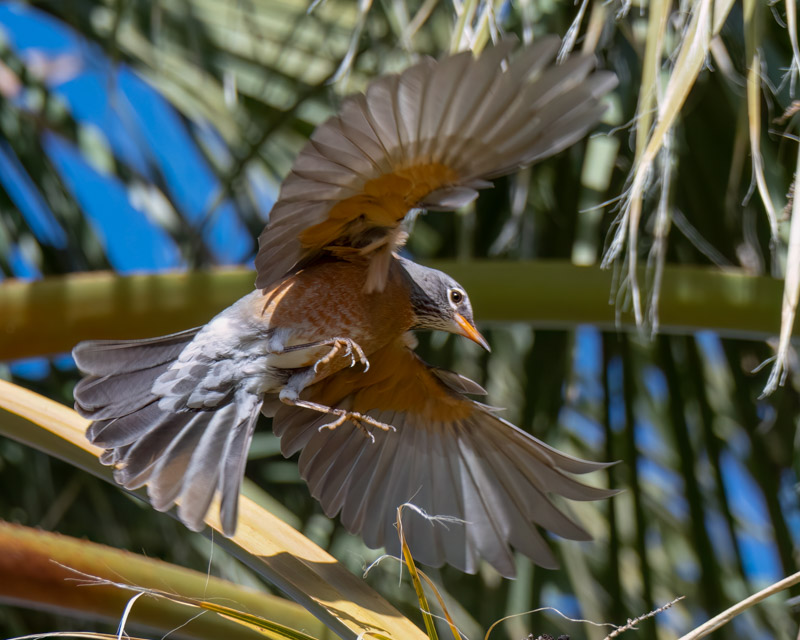
What is this Robin doing with the fruit of a palm tree? Don’t Robins eat worms? That’s what we’ve heard all along. In the summers, Robins will feed on earthworms and grubs. During wintertime, they feed on berries and fruit.
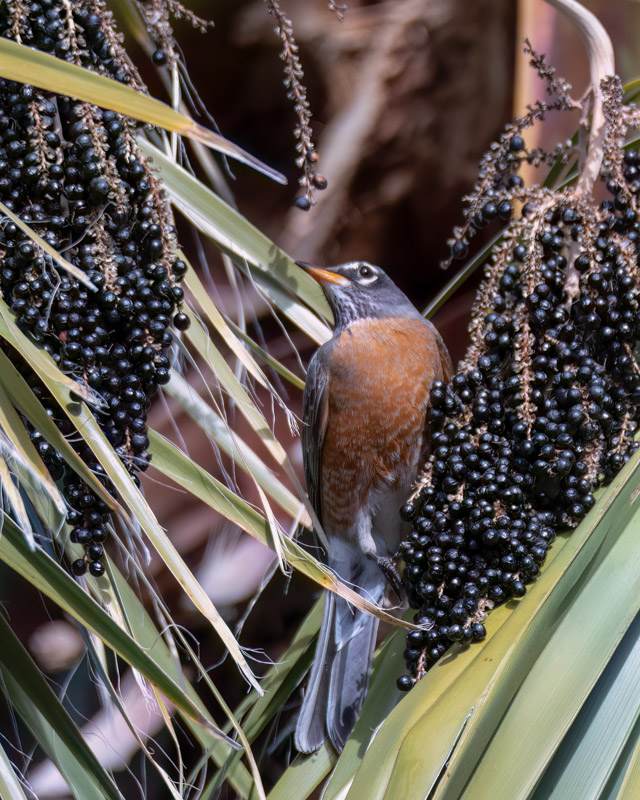
The Robin settled on the top of the fruit cluster. This fruit has a name. These are “drupes”. Drupes are fleshy fruit with a thin skin around a central stone. Think of plums or peaches or almonds. Most palm tree fruit are drupes including coconuts and dates. I’m not sure what type of fruit these palm trees had but there was plenty to eat for the birds.
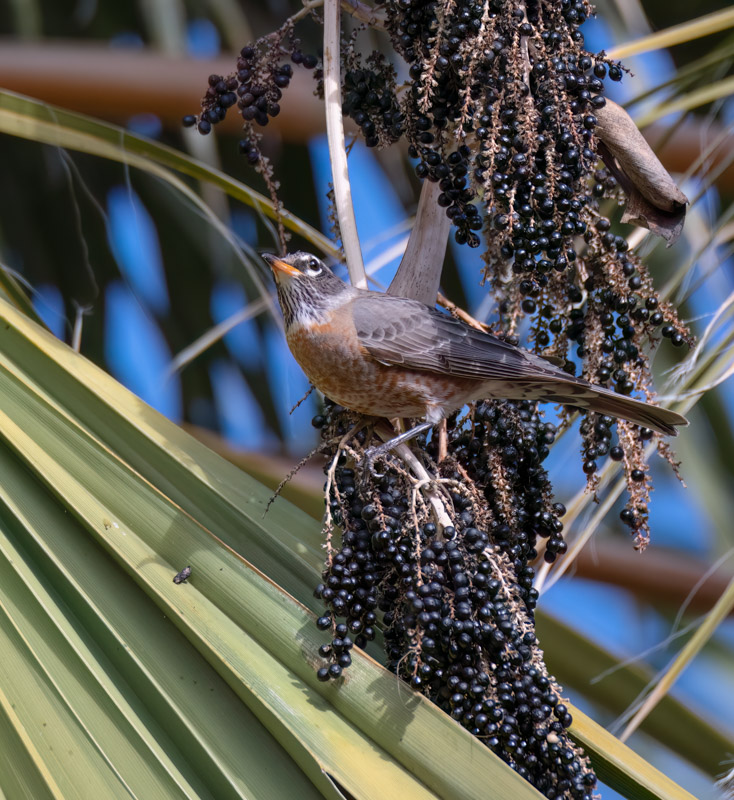
And so the Robin ate.
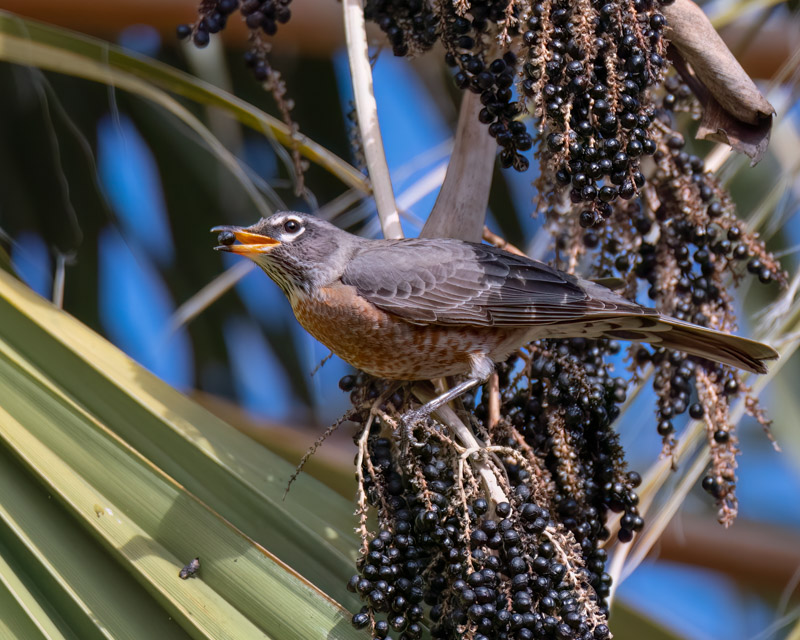
It had different methods of swallowing the fruit.
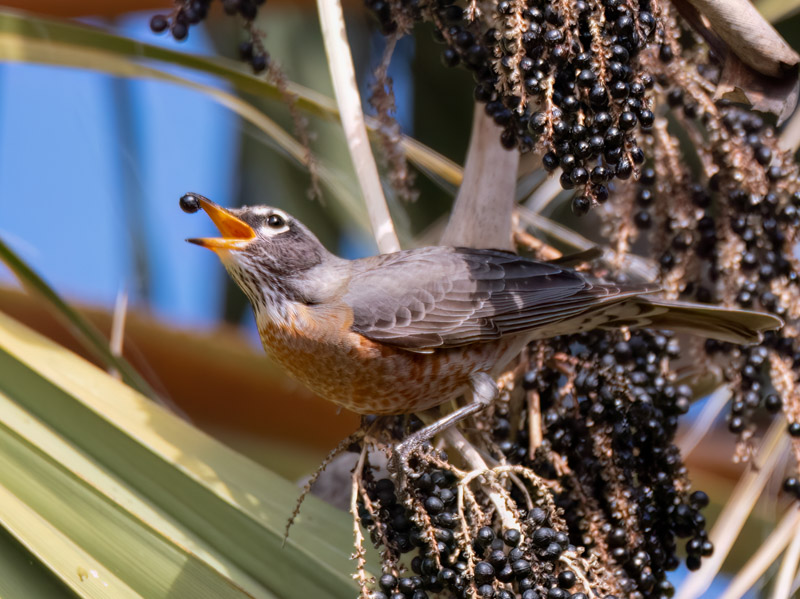
Then down the hatch! Here are “ten fun facts about Robins”, according to the Audubon Society: https://www.audubon.org/news/10-fun-facts-about-american-robin
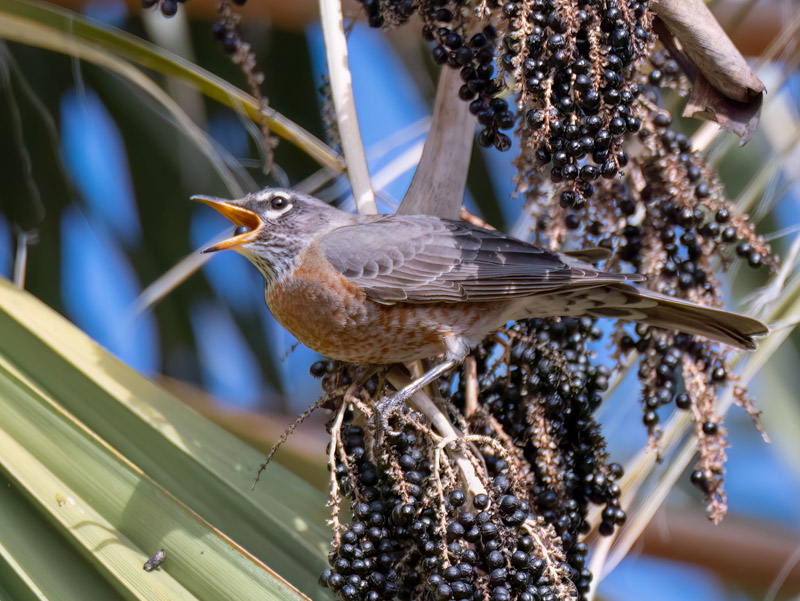
You can see the lump of the fruit inside the Robin’s throat. That bulge under its bill is where the berry is.
In December, I had seen a large flock of Robins on the Sewailo Golf Course. Here is one brightly colored bird in a pine tree.
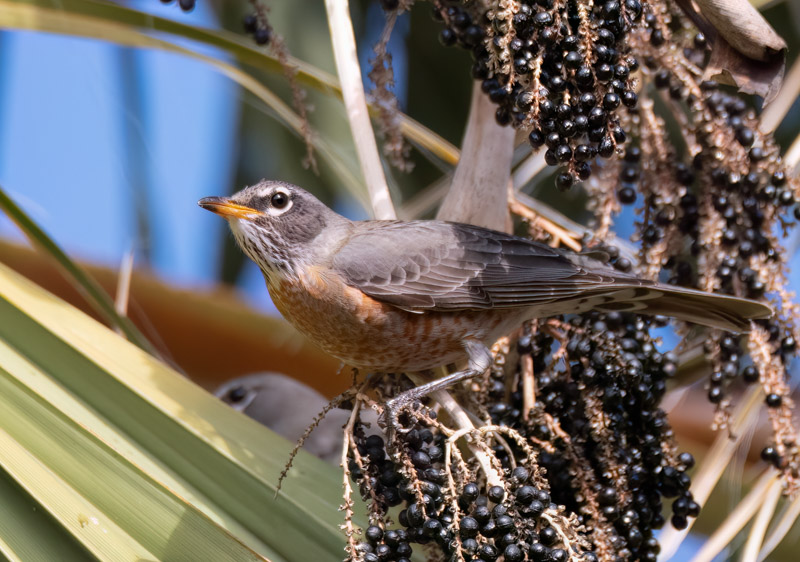
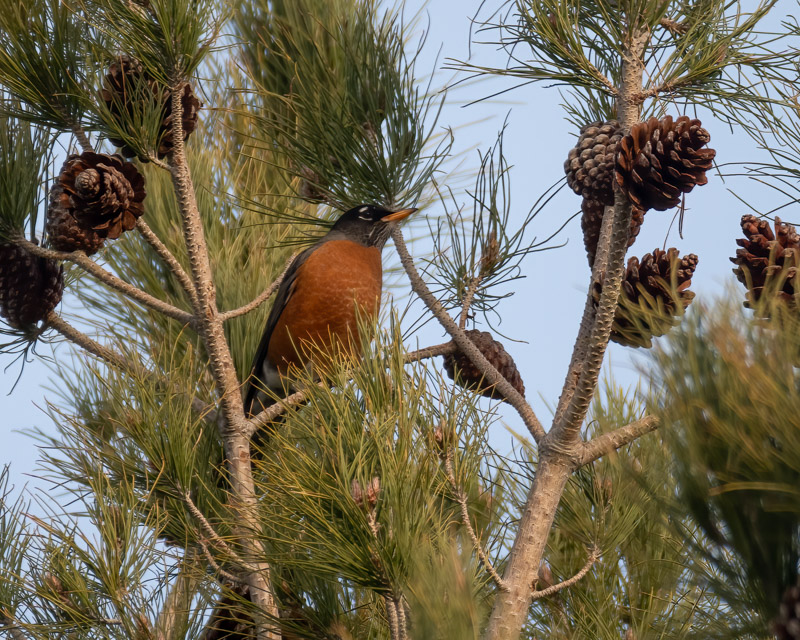
The Robins at Sewailo would all settle into the trees, call each other for a few minutes, and then take off into the air, circling around. We thought that perhaps that flock had just arrived from a night’s migration. The photo below is just a portion of the flock. We watched this flock’s pattern of behavior for a while: flight, settling into a strand of trees, calling to each other, and then taking off into flight again. Eventually we moved on but this was sure a nice sign of winter for us.
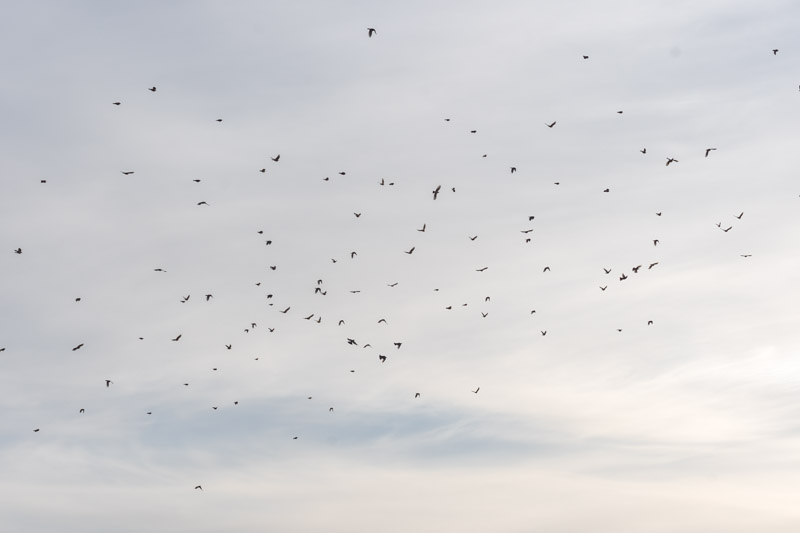
Birdnote talks about Robins eating fruit in the winter: https://www.birdnote.org/listen/shows/robins-and-berries-winter
Return to Foothills Clusters Home
